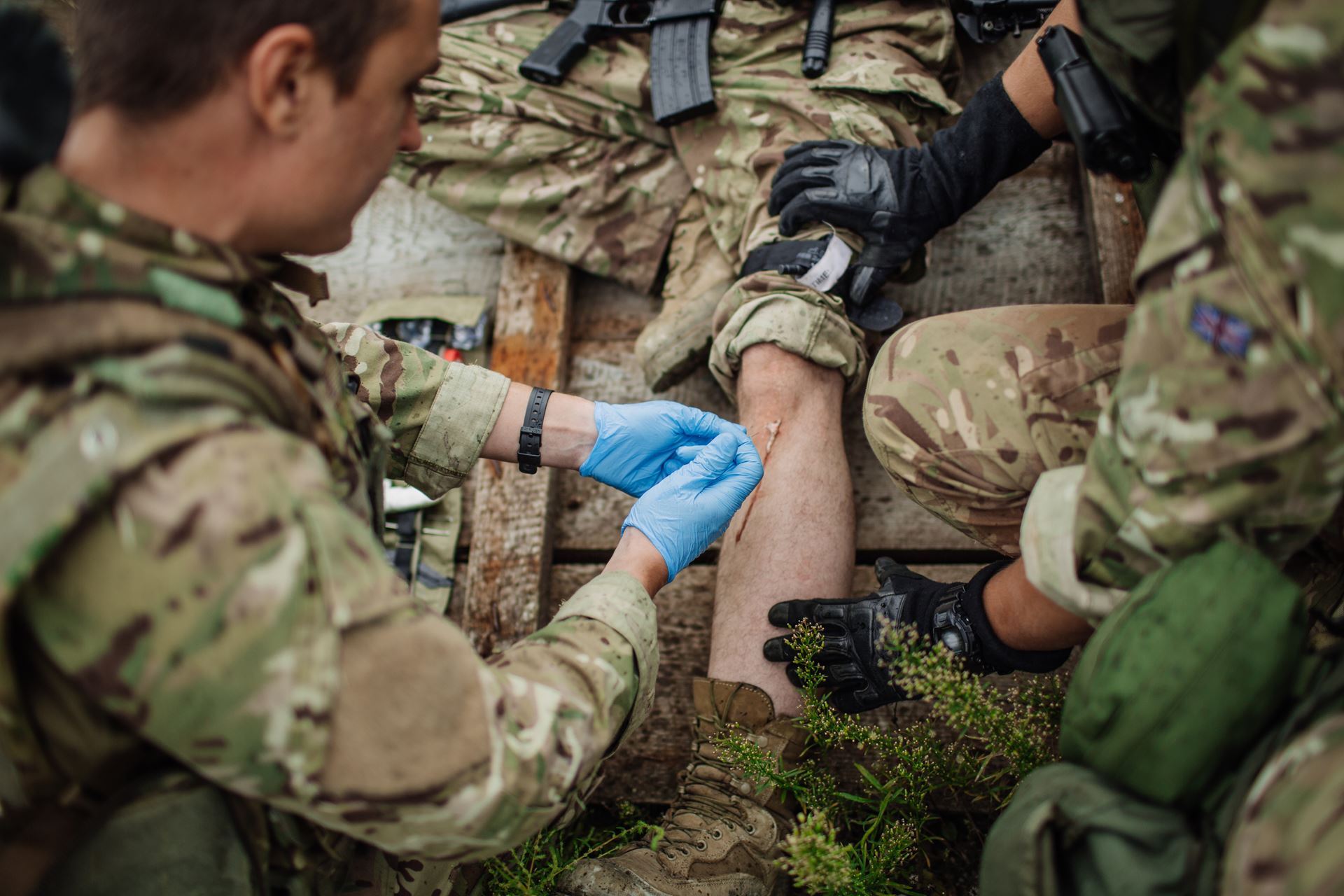|
THE ALPHABET SOUP OF TACTICAL MEDICINE
| Due to the unique development of tactical medicine, there are several organisational bodies that guide the development of protocols and recommendations. There are also several certifications that seek to validate tactical skills. On the military side, the Committee for Tactical Combat Casualty Care (CoTCCC) is the definitive body for developing tactical care for all military personnel and has served as the foundation for civilian tactical care. Tactical Combat Casualty Care (TCCC) guidelines are strictly for a combat setting, but they are the only guidelines endorsed by both the American College of Surgeons (ACS) and National Association of Emergency Medical Technicians (NAEMT). On the civilian side, the Committee for Tactical Emergency Casualty Care (C-TECC) generally defines the civilian tactical emergency medical support (TEMS – a term generally associated with civilian tactical care) guidelines. Although there are several bodies that make recommendations for civilian tactical care, the C-TECC seems to be the most prevalent. |
TACTICAL MEDICINE IN AUSTRALIA
| Tactical medicine in Australia crosses many traditional boundaries and includes a disparate group of inter-agency and multi-discipline teams and individuals. Following the lead of US based SOF units, Australan SOCOMD engaged CoTCCC subject matter experts to build their tactical medical approach. Shortly after the Australian Defence Force as a whole adopted the TCCC guidelines under the name of Care of the Battlefield Casualty. Every soldier, sailor and airman who deploys into an overseas theatre receives training in TCCC interventions and concepts, and the Army School of Health is looking to make it integral knowledge for every medic. The military remain the champions of TCCC and the torch bearers for it's progression into the battlefields of the future, with important projects such as Prolonged Field Care (https://prolongedfieldcare.org/)expanding our knowledge base significantly. The transition and dissemination of military high threat medicine into the civilian sector has traditionally been through the Tactical Emergency Medical Support (TEMS) teams attached to Police Tactical Groups (PTG) and SWAT teams. The horrific burden of active shooter incidents in the US has seen the establishment of C-TECC and the Hartford Consensus, bringing the lessons of battlefield trauma to the civilian high threat setting. In Australia a few Special Operations Teams have been supporting PTG's in TEMS roles for many years. The increasing threat from terrorism has seen the spread of ideas from these specialised units out to frontline Ambulance responders. Police officers have also undertaken significant steps forward with many undertaking courses in their own time, as well as the proliferation of training by TECC/TCCC specialists and the carriage of Individual First Aid Kits (IFAKS) by many thousands of officers. Many other providers work in this space in too many ways to mention them all. The shared common goal, whether in a tourniquet application in the bush after a cliff fall or the use of wound packing by a prison guard, is that of preventing needless death and enhancing the safety of all operators. The momentum is building and ATMA was formed to ensure that this is maintained, building bridges between the various groups and ensure that communication is enhanced to save lives in high threat incidents. |
MORE RESOURCES |




